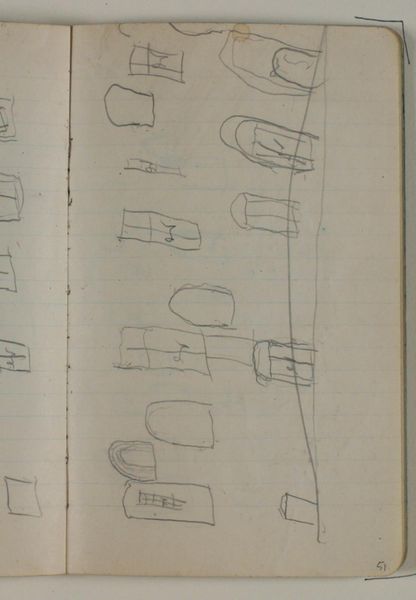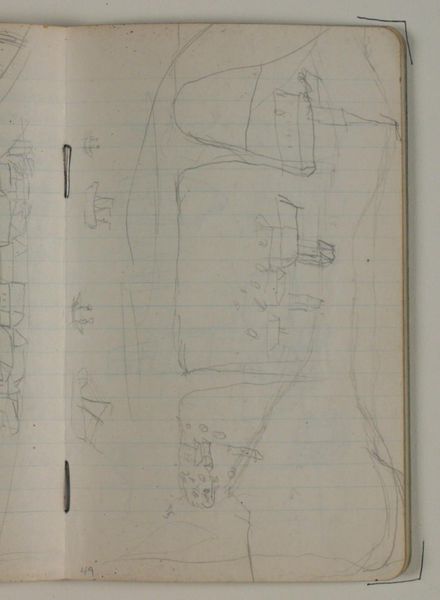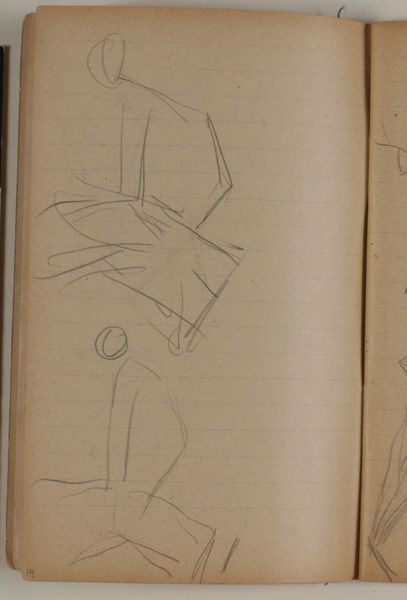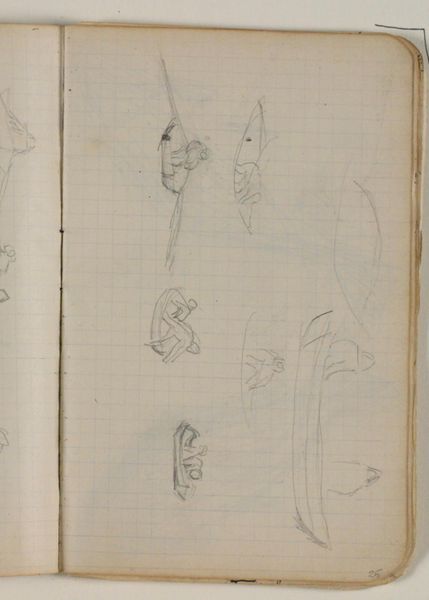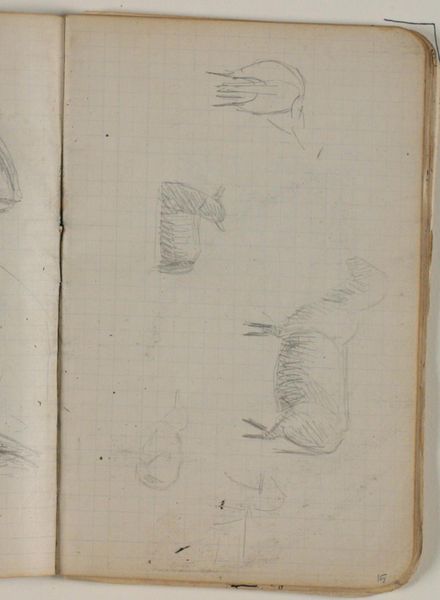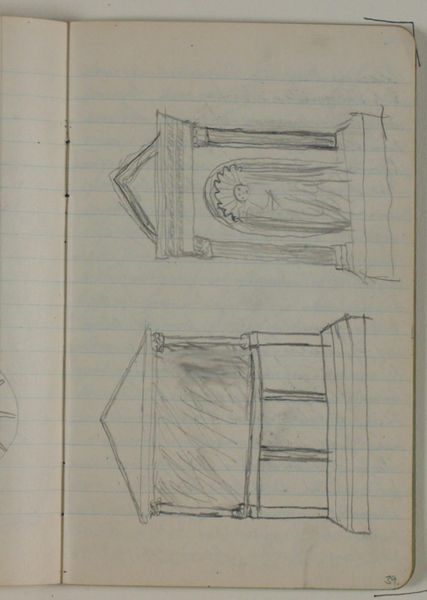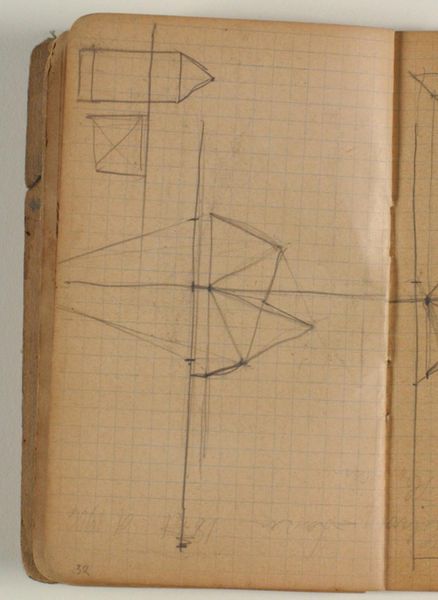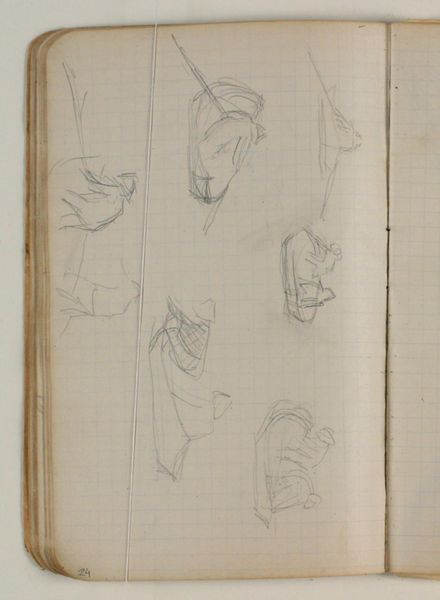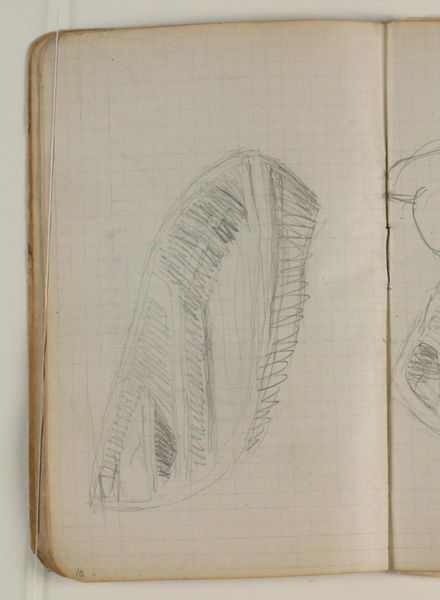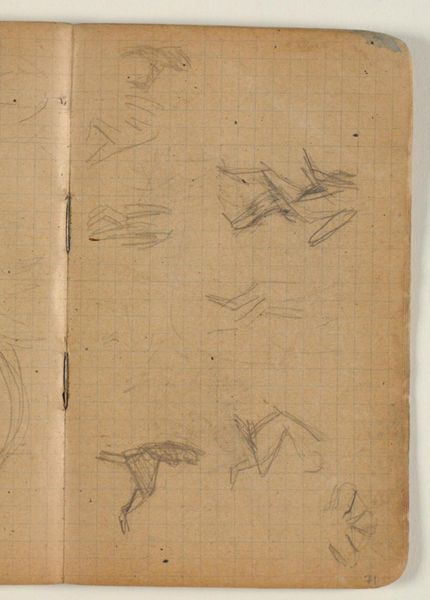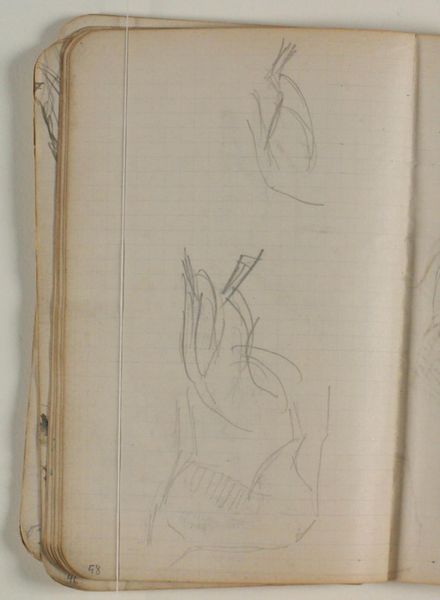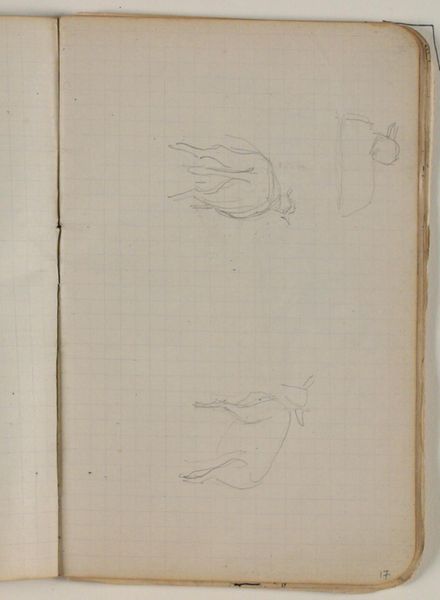
Forskellige tegninger. (Af Anna Larsen Stevns ?) 1933 - 1934
0:00
0:00
drawing, paper, pencil
#
drawing
#
sketch book
#
paper
#
coloured pencil
#
geometric
#
pencil
Dimensions: 175 mm (height) x 109 mm (width) (monteringsmaal), 175 mm (height) x 109 mm (width) (bladmaal)
Editor: So, this is a page from a sketchbook, "Forskellige tegninger," meaning "Various Drawings," dating from 1933-34, possibly by Anna Larsen Stevns. It’s just pencil and colored pencil on paper. It seems like geometric shapes and almost architectural studies. What do you see here? Curator: I see a quiet but potentially radical act of observation. Sketchbooks are often seen as private spaces, arenas where artists grapple with ideas outside the male gaze, if Stevns indeed is the artist, her exploration of geometric forms is quite compelling when contextualized by the period's gender dynamics in art. Are these purely formal exercises, or are they coded explorations of space and structure, critiques of the dominant architectural forms typically designed by men? Editor: That's a fascinating point. I hadn’t considered the act of sketching itself as a statement. Do you see any particular shapes that resonate with those ideas? Curator: Notice the recurrence of partitioned squares. These could represent rooms, buildings, but also perhaps confinement, or conversely, division of labor and space within a home, challenging the traditionally feminine sphere through these shapes. How might we read the arrows connecting the rounded and square shapes, keeping in mind the socio-political and philosophical influences on women artists? Editor: It’s like a personal language being developed, isn’t it? A very subtle protest, perhaps, against defined spaces, but with geometry. Curator: Precisely. The "domestic" was hardly separate from "political." The choice to explore geometry, often considered a ‘masculine’ pursuit, challenges these accepted power structures by inscribing Stevns' name inside it, in ways easily accessible by modern audiences, making the page an extremely compelling and subtle intersectional narrative. Editor: I never would have considered that. Thank you; this really makes me see the sketch in a new light. Curator: Likewise; seeing the sketchbook through your eyes reveals the beauty of simple observation.
Comments
No comments
Be the first to comment and join the conversation on the ultimate creative platform.
